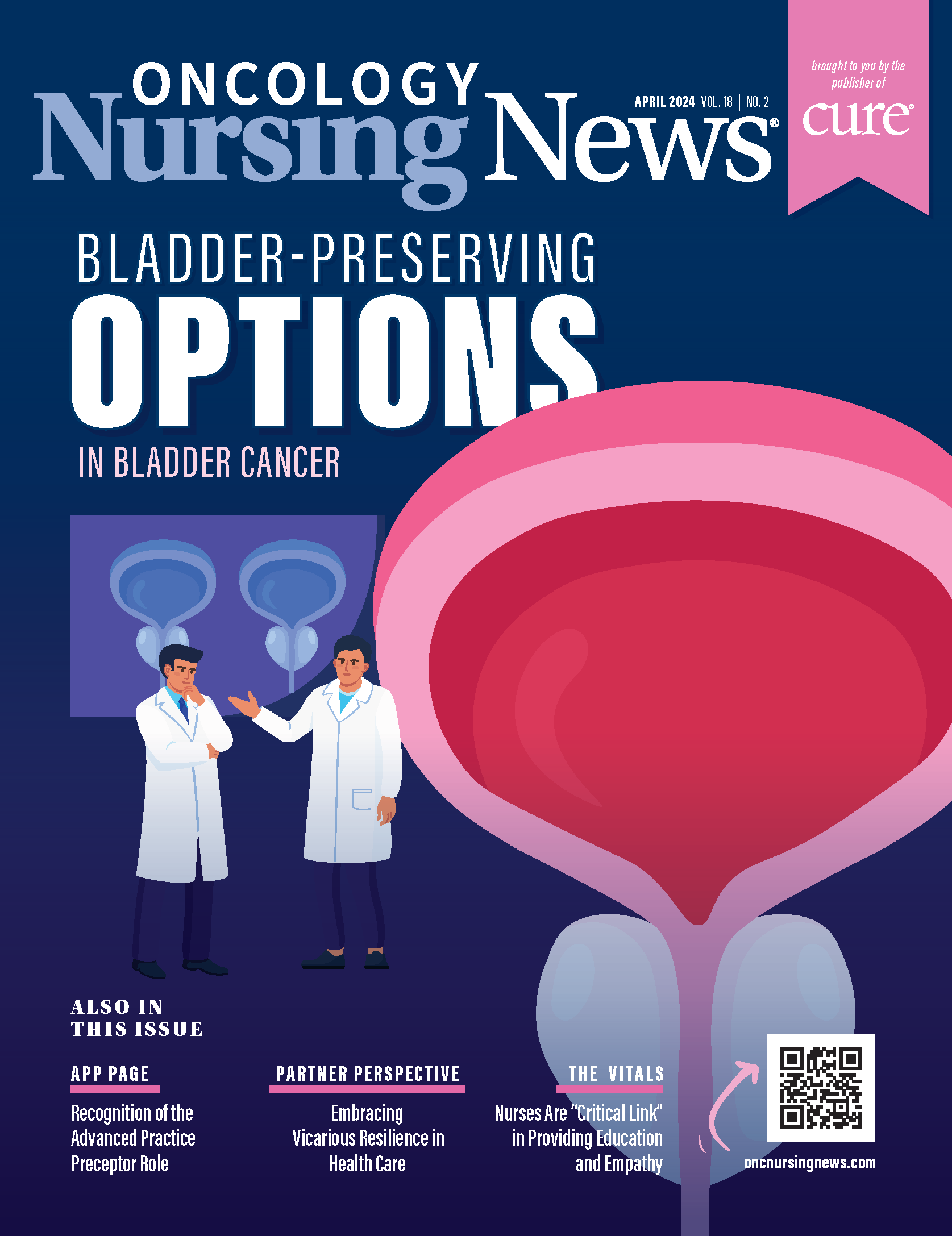Embracing Vicarious Resilience in Oncology Nursing: A Light in the Dark
The journey toward vicarious resilience is not only possible but essential—for ourselves, our patients, and it is the very essence of health care.
Sarah Paul, LCSW, OSW-C

Ten years ago, as I prepared to graduate with my master’s degree in social work, I was often asked, “What will you do with it?” My response was always laced with quiet certainty, “Become an oncology social worker.” The reactions were predictably varied, ranging from confused stares to the unspoken question lingering in their eyes: “Why?” Perhaps most couldn’t fathom why I would choose a path full of emotional challenges. But for me, the answer was clear: It was a calling that resonated within, a blend of passion and purpose that many look for, but few find. My motto was simple from early on: Passion is the protective factor against burnout. Now, looking back, I only wish it were that simple.
Vicarious trauma is like emotional secondhand smoke. Just as a nonsmoker can experience health issues from inhaling smoke, individuals in the helping field can find themselves affected by the trauma stories they hear. This term, along with “secondary traumatic stress,” “compassion fatigue,” and burnout, is common across oncology. While not interchangeable, these experiences sketch a larger narrative about the overall emotional toll of being a helping professional. Although some don’t even realize that this is happening, symptoms of vicarious trauma may include sleep disturbances and nightmares, trouble concentrating, panic symptoms, appetite changes, aches and pains, maladaptive coping strategies, withdrawal, feelings of hopelessness, and more.1 Years into my career, symptoms such as sleep disturbances, concentration difficulties, and a general sense of hopelessness began to shadow my days, signaling a more profound impact on my identity and sense of self than I had realized.
We also see this type of trauma creating a ripple effect in the health care system. This emotional strain can challenge your ability to maintain relationships, reducing empathy and care quality. Over time, professionals might become disillusioned, losing their sense of purpose, which can decrease overall job satisfaction and productivity. While this article is a small piece of the conversation, I believe that learning about vicarious resilience provides hope for combating the detrimental long-term effects of trauma exposure.
As we dive deeper into the emotional complexities of oncology care, it’s essential to bring to light the response known as vicarious resilience. Vicarious resilience refers to the emotional and psychological growth clinicians experience by witnessing the strength of their clients who are overcoming adversity. This concept encapsulates how health care professionals find meaning and strength in helping individuals through their journeys of trauma, particularly those facing severe health challenges.2 To liken it to something positive, think of it like the sunlight that nurtures a garden; just as plants absorb sunlight to grow and thrive, oncology professionals can absorb the strength and resilience shown by their patients, which can transform their own experiences of vicarious trauma into growth and renewed energy. Vicarious resilience does not minimize the severity of vicarious trauma; however, it can offer a counterbalance to those experiencing compassion fatigue.
Mitigating vicarious trauma in oncology settings involves creating a supportive work environment that fosters communication, resilience, and well-being.3
Strategies include:
- Learning about vicarious trauma and its effects to identify signs and symptoms in oneself and colleagues
- Participating in self-care practices like physical activity, mindfulness, and counseling
- Connecting with peers for support and discussing shared experiences
- Prioritizing breaks and establishing boundaries to prevent emotional fatigue and burnout
- Advocating for institutional help to tackle vicarious trauma and promote a collaborative workplace culture, emphasizing effective communication and teamwork
Shifting from vicarious trauma to vicarious resilience is often a work in progress, starting with building awareness around the impact of vicarious trauma and then implementing trauma-informed practices that support staff. Some of these strategies include encouraging self-care, promoting professional development focused on resilience skills, creating spaces for staff to share and celebrate patient success stories, and implementing regular debriefing sessions. Encouraging open discussions about emotional challenges, promoting work-life balance, and recognizing the signs of stress and trauma in staff are also vital. Implementing these measures can help oncology professionals manage the emotional toll of their work more effectively.
At CancerCare, we prioritize individual and group supervision, adopting a trauma-informed supervision approach that is a testament to our commitment to understanding and actively mitigating vicarious trauma. This method not only acknowledges the trauma experienced by our clients but also the secondary trauma that can affect our team. By prioritizing these practices, we create a space where resilience is encouraged and cultivated, embodying a proactive stance against the emotional toll of our work. Acknowledging and addressing the impact of vicarious trauma while highlighting and learning from instances of resilience can help oncology professionals find balance and support their well-being.
Reflecting on the past decade, my understanding of passion, resilience, and the human ability for growth has evolved immensely. The journey through oncology social work, marked by challenges and triumphs, highlights the vital need for awareness and support in navigating the emotional complexities of this field.
The conversation around vicarious trauma and resilience is far from over. Still, sharing my journey can contribute to a broader dialogue on nurturing well-being and resilience in health care. For those walking this path alongside me, know that the journey toward vicarious resilience is not only possible but essential—for ourselves, our patients, and it is the very essence of health care.
References
- Sutton L, Rowe S, Hammerton G, Billings J. The contribution of organisational factors to vicarious trauma in mental health professionals: a systematic review and narrative synthesis. Eur J Psychotraumatol. 2022;13(1):2022278. doi:10.1080/20008198.2021.2022278
- Tsesmelis Piccolino S. Vicarious resilience: traversing the path from client to clinician through a search for meaning. Soc Work Health Care. 2022;61(6-8):468-482. doi:10.1080/00981389.2022.2134274
- Gillman L, Adams J, Kovac R, Kilcullen A, House A, Doyle C. Strategies to promote coping and resilience in oncology and palliative care nurses caring for adult patients with malignancy: a comprehensive systematic review. JBI Database System Rev Implement Rep. 2015;13(5):131-204. doi:10.11124/jbisrir-2015-1898




